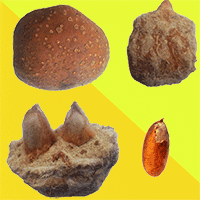
Effects of different mechanical treatments on Quercus variabilis, Q. wutaishanica and Q. robur acorn germination
Yan Liu (1), Longyu Hou (2), Qingmei Li (1)
iForest - Biogeosciences and Forestry, Volume 8, Issue 6, Pages 728-734 (2015)
doi: https://doi.org/10.3832/ifor1423-008
Published: May 05, 2015 - Copyright © 2015 SISEF
Technical Reports
Abstract
Delayed and uneven germination of acorns has a negative effect on seedling quality and yield in seedlings. To address this issue, the effects of different mechanical treatments were studied, including a control (CK), removal of cup scar (RS), removal of pericarp (RP), removal of pericarp and 1/2 of the cotyledon (HC) and removal of pericarp and 2/3 cotyledon (TC), on the germination of Quercus variabilis, Q. wutaishanica and Q. robur acorns and pericarp thickness. The results showed that (1) RP and HC treatments significantly decreased root and shoot mean germination time, increased rooting and shooting germination percentage, and improved the root and shoot synchronization and vigor indexes of the three species’ acorns; (2) the acorns from the TC treatment significantly reduced root and shoot mean germination time and significantly induced the root and shoot synchronization index for all three species; and (3) the RS treatment significantly reduced the root and shoot mean germination time of the three species. Therefore, RP and HC treatments can effectively accelerate germination and regular seedling, which are important in the propagation of Q. variabilis, Q. wutaishanica and Q. robur seedlings. Even and quick germination help reduce acorn predation.
Keywords
Pericarp and Cotyledon Excision, Pericarp Thickness, Acorn Germination, Quercus wutaishanica
Authors’ Info
Authors’ address
Qingmei Li
State Key Laboratory of Tree Genetics and Breeding, Research Institute of Forestry, Chinese Academy of Forestry, Beijing 100091 (China)
Grassland Science Department, Animal Science and Technology, China Agricultural University, Beijing 100193 (China)
Corresponding author
Paper Info
Citation
Liu Y, Hou L, Li Q (2015). Effects of different mechanical treatments on Quercus variabilis, Q. wutaishanica and Q. robur acorn germination. iForest 8: 728-734. - doi: 10.3832/ifor1423-008
Academic Editor
Gianfranco Minotta
Paper history
Received: Aug 06, 2014
Accepted: Jan 23, 2015
First online: May 05, 2015
Publication Date: Dec 01, 2015
Publication Time: 3.40 months
Copyright Information
© SISEF - The Italian Society of Silviculture and Forest Ecology 2015
Open Access
This article is distributed under the terms of the Creative Commons Attribution-Non Commercial 4.0 International (https://creativecommons.org/licenses/by-nc/4.0/), which permits unrestricted use, distribution, and reproduction in any medium, provided you give appropriate credit to the original author(s) and the source, provide a link to the Creative Commons license, and indicate if changes were made.
Web Metrics
Breakdown by View Type
Article Usage
Total Article Views: 52440
(from publication date up to now)
Breakdown by View Type
HTML Page Views: 43513
Abstract Page Views: 3076
PDF Downloads: 4187
Citation/Reference Downloads: 14
XML Downloads: 1650
Web Metrics
Days since publication: 3894
Overall contacts: 52440
Avg. contacts per week: 94.27
Citation Metrics
Article Citations
Article citations are based on data periodically collected from the Clarivate Web of Science web site
(last update: Mar 2025)
Total number of cites (since 2015): 3
Average cites per year: 0.27
Publication Metrics
by Dimensions ©
Articles citing this article
List of the papers citing this article based on CrossRef Cited-by.
References
Proceedings of the International Seed Testing Association. International rules for seed testing. Seed Science Technology 27: 1-333.
Gscholar
Generative propagation. In: “Deby (Quercus robur L, Q. petraea (Matt) Liebl) - Nasze drzewa lesne Bogucki Wydawnic - two Naukowe” (Bugala W eds). Poznan, Poland, pp. 305-388.
Gscholar
Nasiona Drzew Lesnych. Odzbioru do siewu [Seeds of forest broadleaves from harvest to sowing]. PWN, Warszawa-Poznan, Poland, pp. 307. [in Polish]
Gscholar

















